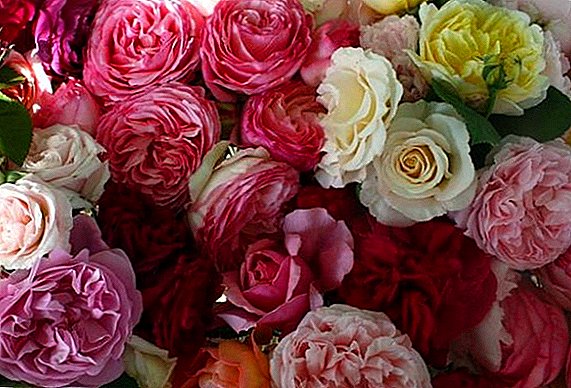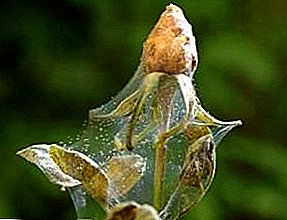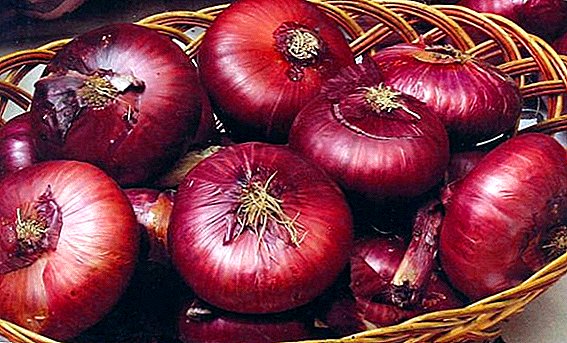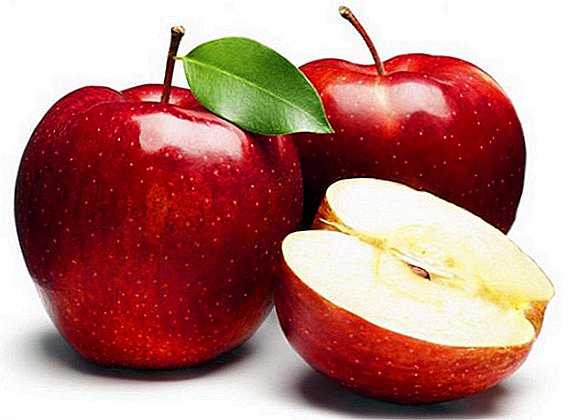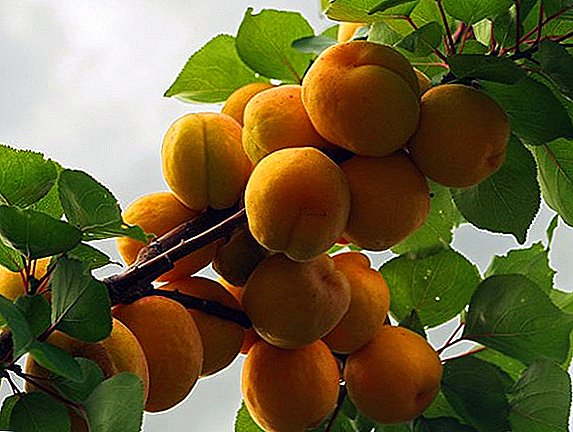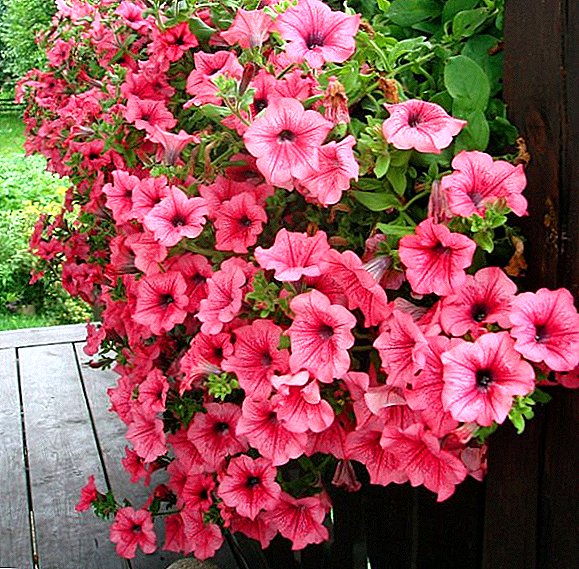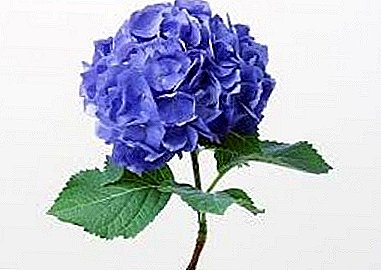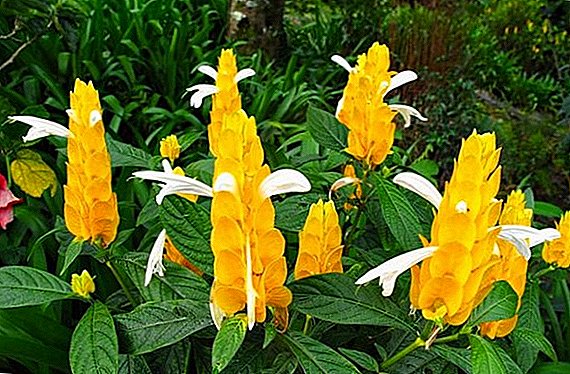 Lovers of indoor plants very often think about how to diversify their home greenhouse with bright and flowering elements.
Lovers of indoor plants very often think about how to diversify their home greenhouse with bright and flowering elements.
Pachistahis is a perfect place for this - a pot with bright and beautiful flowers.
Short description
Pachistachis is a unique houseplant of the Acanthaceae family (Acanthaceae), which came to us from the tropics of America, as well as the subtropical forests of East India and the coast of Australia. Pachistachis is an evergreen shrub, reaching about a meter in height, with erect stems and oval leaves perpendicular to them. The latter have a large shape, dark green color and taper at the end.
When growing in a room environment, the pot is not picky in itself, it just requires compliance with some aspects of home care for the pachistachis.
Did you know? The people yellow pakhistahis bears the name "yellow candle" or "golden shrimp". The shape of the candle resembles the inflorescence itself (spike), but the shape of the shrimp prunes begins when white flowers bloom on it.
Types of pachistachis for indoor cultivation
The words "pachys" and "tachys" in Greek mean "thick" and "ear", respectively. That is why he was called so because of the flower in the form of a spikelet, resembling a candle. 
Today, there are about 12 different species of this plant in nature, but the following types of cultivated pachistachis in our country are:
- Pachistachis yellow (Pachystachys lutea) is a semi-woody, semi-grassy bush that reaches a height of 90-100 cm, with erect shoots. The leaves are large, sessile (attached directly to the stem), oval-shaped with tapering ends, have a dark green color. The inflorescences have the form of a long (15–20 cm), upright ear of bright yellow color, from which, from the bottom to the top, flowers of a two-lipped white form appear.
In other words, this type of pot is a room flower with yellow spikes that resemble the shape of candles.
Like pachistachis, the Acanta family belongs to tunbergia.The flowering period takes six months, starting in early spring and ending in the fall.

- Pachistachis red (Pachystachys coccinea) is a shrub reaching a height of more than 1 m, with the same characteristics as Pachistachis yellow, except for the color of the inflorescences: the spikelets have a dark green color, and the blooming flowers are bright red.
This type of pachistachis is not very common in growing under room conditions, but because of its color it attracts the attention of leading flower growers. 
What you need to create conditions
Many fans of indoor plants, first saw the photo pakhistakhisa, scared to start it because of the far-fetched difficulty in the care. In order for any flower to develop normally, there are certain unique rules for growing it in room environment.
Did you know? The contrast and solemn appearance of the red pachistachis contributed to the fact that the people began to call him the "Cardinal's Guard".
Soil and pot
As the basis for the cultivation of pachistachis, a universal mixture suitable for decorative flowerpots or self-cooked pots is suitable. substrate with the following ratio of proportions:
- clay-turf land - 2;
- peat land - 1;
- humus - 1;
- leaf earth - 1;
- coarse river sand - 1.
 The pot in which the soil is placed for breeding a flower should be voluminous (at least 2.5 liters). For 2-4 shrub sprouts in one-, two- or three-year-old culture a low capacity with a wide diameter will suit.
The pot in which the soil is placed for breeding a flower should be voluminous (at least 2.5 liters). For 2-4 shrub sprouts in one-, two- or three-year-old culture a low capacity with a wide diameter will suit.Lighting
The optimum location for placing a pachistachis is a bright place in the western or eastern side of the room with bright diffused light, which excludes direct sunlight.
Important! The essential condition for the proper cultivation of pachistachis is the presence of drainage holes in the bottom of the pot, as well as the use of drainage material, such as pebbles, gravel or expanded clay.
Temperature
Pachistachis who came to us from the tropics likes moderately warm temperatures: in spring and summer, it can range from 18 ° C to 23 ° C, and in autumn and winter - from 16 ° C to 19 ° C. 
How to care
Next, we consider the basic rules for breeding and caring for the pachistachis at home.
Watering and spraying
In spring and summer, pachistachis needs to be plentiful in irrigation with soft and settled water. When the soil dries, the pot will drop the leaves and begin to dry out.
Important! During the flowering period when spraying and bathing under the shower of a plant, water should not fall on the inflorescences.Climate control over the humidity of the air in the room during this period should be at least 60%, so the leaves of the pachistachis can be periodically sprayed with water or even bathed in the shower.
 Additional moisture can be provided with water in the pan, eliminating the contact of the root system with water due to the drainage layer of expanded clay. But this should also be done carefully, as excessive soil moisture has a bad effect on the life of the pot.
Additional moisture can be provided with water in the pan, eliminating the contact of the root system with water due to the drainage layer of expanded clay. But this should also be done carefully, as excessive soil moisture has a bad effect on the life of the pot.In autumn and winter, pahistachis should be watered a couple of days after the topsoil dries out.
Top dressing
This exotic flower is fertilized twice a month with mineral complexes for flowering flowerpots. Also a good influence on the growth and development of plants have a liquid mullein or chicken manure. Top dressing is best to make a well-moistened soil (after abundant watering) away from the stems to avoid burns.
Pruning
Due to the fact that the pachistachis grows slowly, it is recommended to cut and pinch it.  To do this, cut the stems with shoots up to 12 cm, and the tops on all the processes pinch.
To do this, cut the stems with shoots up to 12 cm, and the tops on all the processes pinch.
Combating all sorts of difficulties
Below we consider the most common problems that arise when growing pachistachis, as well as the causes that contribute to this.
- Dropping leaves - insufficient watering, air temperature drops, drafts (it is necessary to check the soil moisture, stability of air temperature and ensure normal positioning of the pot with the plant, avoiding drafts and finding batteries nearby).
- Dry tips and twisting of the leaves - dry air (it is necessary to install climate control air).
- Exposure of the lower part of the shrub is normal after some time of its vital activity (a short pruning of the plant is made for rejuvenation and continued growth of the pachistachis).
- Reducing the number of leaves, stretching shoots - low light (it is necessary to provide bright diffused light, contributing to the normal development of the plant, as well as the location in the right side of the room).
 Among insect pests that most often infect a plant, there may be a spider mite or shieldfish. After timely detection of the problem and treatment of the plant with insecticides, it is quite possible to bring it back to life.
Among insect pests that most often infect a plant, there may be a spider mite or shieldfish. After timely detection of the problem and treatment of the plant with insecticides, it is quite possible to bring it back to life.Did you know? Pachistachis yellow was first studied in 1847 by K. Nis. The celebrity was brought to the plant by the publication of his image on the cover of the most popular book in the field of indoor plant breeding, Dr. Hession.If you use traditional medicine, then spraying the pachistachis with garlic solution will help.
Garlic solution is also used when spraying dracaena, cucumbers and dill.After performing the pest control procedures, the plant needs a warm soul. Flower growers also ask why, when all the rules for plant care are observed, the pachistachis do not bloom at home.
The answer is simple: not all the norms are observed, because the cause of this problem is often insufficient lighting. 
Transplant rules
The need for transplantation may arise for two reasons:
- the root system in the old capacity becomes cramped;
- the lower part of the plant drops the leaves, and pruning the plant does not contribute to further growth.
The pot is picked up a couple of centimeters more in width and height, providing the same breathability as during planting (drainage).
In order to prevent the soil from oxidizing, a part of the old earth is removed and the missing number of types of earthen substrate is added in the same proportions. 
Reproduction by cuttings
We will understand how to propagate pachistachis at home with cuttings. This procedure is done with apical and middle non-lignified cuttings during spring pruning of the plant.
Learn about the intricacies of reproduction by cuttings of such indoor plants as poliscias, pandanus, stephanotis, eschinantus.Each cut stalk must have two internodes. After pruning, the cuttings take root in warm (22-25 ° C), well-treated water with regular spraying of the plant.
For the fastest rooting, the cuttings are covered with a glass jar or a transparent bag. But it requires daily removal of capacity and ventilation of the plant for 30-40 minutes.  Within 14–20 days, the cuttings can be transplanted into small pots with a diameter of 12–15 cm, and only after some time in the absence of problems — a permanent place for an adult plant.
Within 14–20 days, the cuttings can be transplanted into small pots with a diameter of 12–15 cm, and only after some time in the absence of problems — a permanent place for an adult plant.
Important! When the temperature reaches above + 24 ° C, it is necessary to increase the humidity of the air around the plant by spraying it. Temperatures below + 14 ° C lead to the cessation of pachistachis growth and the further death of the plant.Today pahistakhis is a rare guest in florist flats. But the long life of a bright representative of evergreens is provided to you, while observing the rules of caring for the pot.


